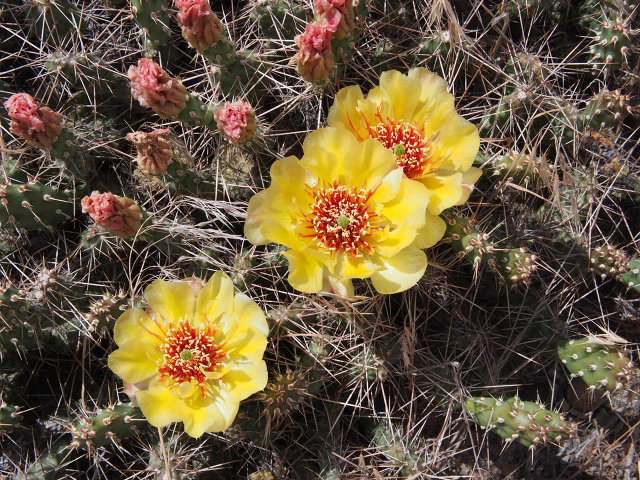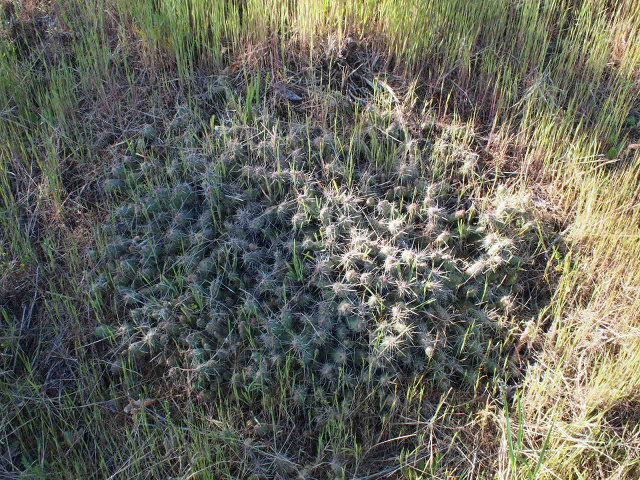Cactus in Spots You Might Not Expect
Published at 20:49 on 8 June 2018

The above picture was taken by me last week in Lillooet, BC. There were several large patches of yellow flowers by the road, easily enough to get my attention as a passenger. Their size and color indicated they were probably cactus flowers. I alerted the driver so we could go back, stop, and admire them.
Many are surprised to learn there is wild cactus growing in Canada; my fellow companions on that trip were amongst the surprised. Many are equally or more surprised to learn that the same species also grows wild in western Washington, in the most rain-shadowed areas of the Olympic Mountains. Here is a patch I saw near Sequim earlier this spring:

It shouldn’t really be a surprise that cacti are found in either Lillooet or Sequim, as both locations are rain-shadowed. Lillooet in particular is known for being a dry spot, and being well inland often has just the sort of hot, dry summer conditions that cacti love. Plants don’t care about our preconceived biases or political boundaries; they grow wherever the environment is suitable for them.
The winters aren’t hot or dry, but this species is one of the hardiest and most northerly of cacti. It grows as far north as the Peace River Valley in northeastern BC, a region that can see temperatures colder than -40˚ in the winter.
Its common and scientific names point to how its pads easily become detached from the mother plant, their thorns embedding themselves in the fur, clothing, or skin of unwitting creatures that brush against them. When removed and discarded, they root and create new plants. In this trait, this prickly pear acts more like a cholla. That’s not a huge surprise, as the chollas (genus Cylindropuntia) and prickly pears are very closely related; for many years both were even lumped into the same genus.
Some of my own Opuntia fragilis are getting ready to bloom. I may be interested in plants, but unlike most who are, I’m not very good at gardening. This cactus was the answer to my question: “What could I plant in those window boxes (preferably a native plant) that I wouldn’t kill by forgetting to water or being away and not able to water?”
Those window boxes in question face south and are beneath eaves that serve to keep most rainfall out of them, the perfect micro-habitat for a sun-loving rain shadow plant like this. It felt a little odd dumping the nice potting soil out of them and replacing it with the gravely glacial till (of which I have plenty in my yard) that our local populations of this cactus prefer.
